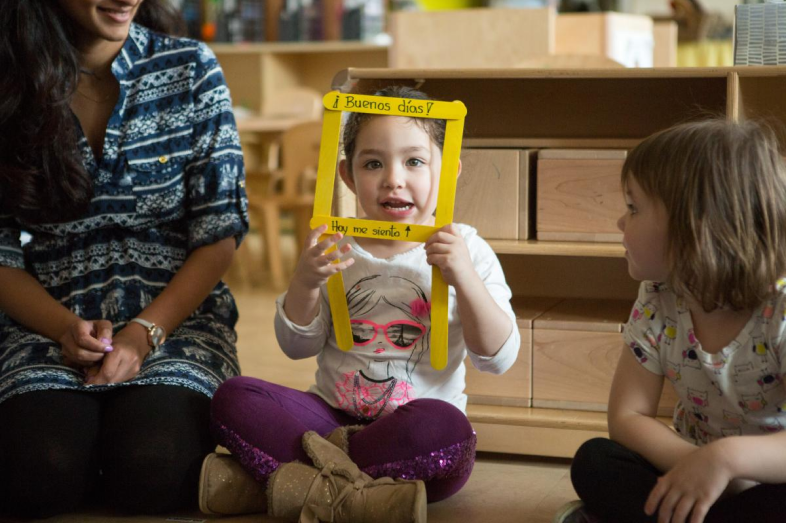

The evidence base for early childhood education expanded last month with the release of two reports that, together, analyze the outcomes of more than 100 early childhood interventions.
The reports, from the Rand Corporation and the American Educational Research Association (AERA), find short- and long-term benefits for children and families, and identify potential cost-savings for schools and government.
In their review of existing research on dozens of early childhood interventions — from home visiting programs to Head Start and public pre-K — the analyses represent the latest in a growing body of evidence demonstrating the promise of interventions during children’s first five years.
The studies come at a time when policymakers and advocates are increasingly turning to children’s earliest years to address the achievement gaps that have long plagued the U.S. education system. In recent years, in states red and blue, funding for early childhood education has been on the rise. Yet, key questions remain — including whether early education programs produce benefits and cost-savings that persist over time.
Effects on Grade Retention, Special Education Placements
The AERA study, published in the journal Educational Researcher, finds that children who participate in high-quality, classroom-based early childhood education programs before entering kindergarten experience fewer special education placements, decreased grade retention, and improved high school graduation rates compared with peers who do not participate.
The results suggest that, in addition to improving outcomes for students, investments in early childhood education are smart for states’ and districts’ bottom lines — potentially assuaging concerns about the high upfront costs that come with providing the programs.
That’s because special education and grade retention come at huge costs to school districts, said Greg Duncan, a professor of education at the University of California, Irvine and part of a team of researchers who conducted the study.
“To have a child spend an extra year in a grade, adds another $8- or $9,000 to the cost of educating that child,” Duncan said in an interview with Priska Neely of Southern California Public Radio
As Education Week’s Christina Samuels writes in her coverage of the analysis, the results are particularly significant because they demonstrate that early learning programs can have demonstrable benefits years — even decades — after their implementation:
“The findings contrast with other research, such as on the federal Head Start program and on Tennessee’s preschool program, that have found that the behavioral and academic benefits of those programs fade over time.”
The AERA paper analyzes 22 existing studies that, together, span five decades of research and evaluate a wide variety of approaches to early learning programs.
“We were surprised by how consistent our findings were, given the diversity of the studies in our analysis,” said Dana Charles McCoy, an assistant professor at the Harvard Graduate School of Education and the lead author of the analysis, in a press release. “The common thread is that these programs are high in quality.”
Still, there are limitations in drawing conclusions from data collected decades ago, McCoy told Samuels.
“Because we are looking at outcomes that are only observable years—or even decades—after children attend preschool, we can’t necessarily make conclusions about whether the programs that are being implemented today will show benefits like the ones we observe in our study,” McCoy said.
Programs ‘Largely Pay for Themselves’
Separately, a large-scale analysis from the Rand Corporation identified 115 early childhood programs that have been rigorously evaluated and found that nearly all programs had a positive effect on at least one child outcome.
The 115 programs in the analysis represent a diverse set of approaches to early intervention, including preschool, home visiting, and cash assistance for parents.
In addition to having a positive effect on a range of child outcomes like cognitive achievement, health, and behavior and emotion, benefit-cost analyses of 19 of the programs found that “most programs largely pay for themselves through benefits to participants, government, and other members of society.”
While the analysis estimates a benefit of $2 to $4 for every dollar invested in the early learning programs reviewed, it also warns that “benefits can take decades to exceed costs, posing challenges for funding mechanisms that require short-term payoffs.”
The report’s authors acknowledge limitations to drawing conclusions from such a broad review of a diverse set of approaches. The programs analyzed include resource-intensive, costly programs such as the 1960’s Perry Preschool Project, as well as more recent, less-intensive, low-cost interventions. The report calls for additional research to zero in on precisely which components of early learning programs drive effectiveness and produce the greatest short- and long-term outcomes
As Kevin Mahnken of The 74 writes in his coverage of the report, the question remains of how comparable small, intensive programs like the Perry Preschool Project are to the types of large-scale public programs that some advocates would like to see more of in the U.S.:
“[E]ven as states have contributed millions of dollars in new spending on preschool systems, skeptics like the Brookings Institution’s Russ Whitehurst believe that the impact of the programs is unlikely to be retained once they are scaled up to serve millions more children.”
Still, the authors conclude that devoting public resources to high-quality early learning programs is a wise investment: “With this expanded evidence base, policymakers can be highly confident that well-designed and -implemented early childhood programs can improve the lives of children and their families.”
Last month, dozens of education reporters gathered in Chicago for the Education Writers Association’s seminar on covering early learning. Among other topics, early childhood experts, child care providers, and journalists discussed the “impossible equation” that child care providers face in making ends meet and what reporters should look for when observing early learning settings.
